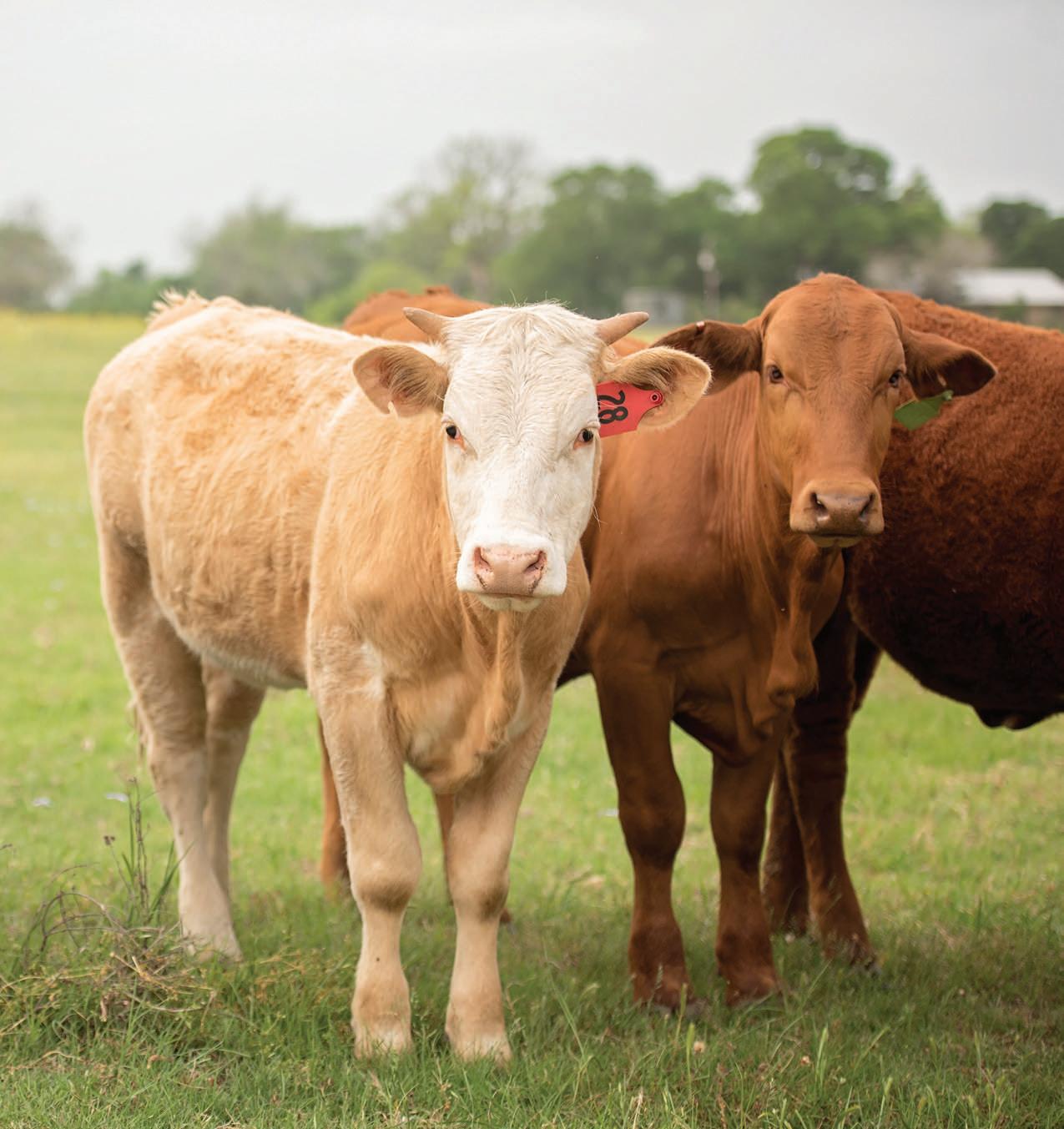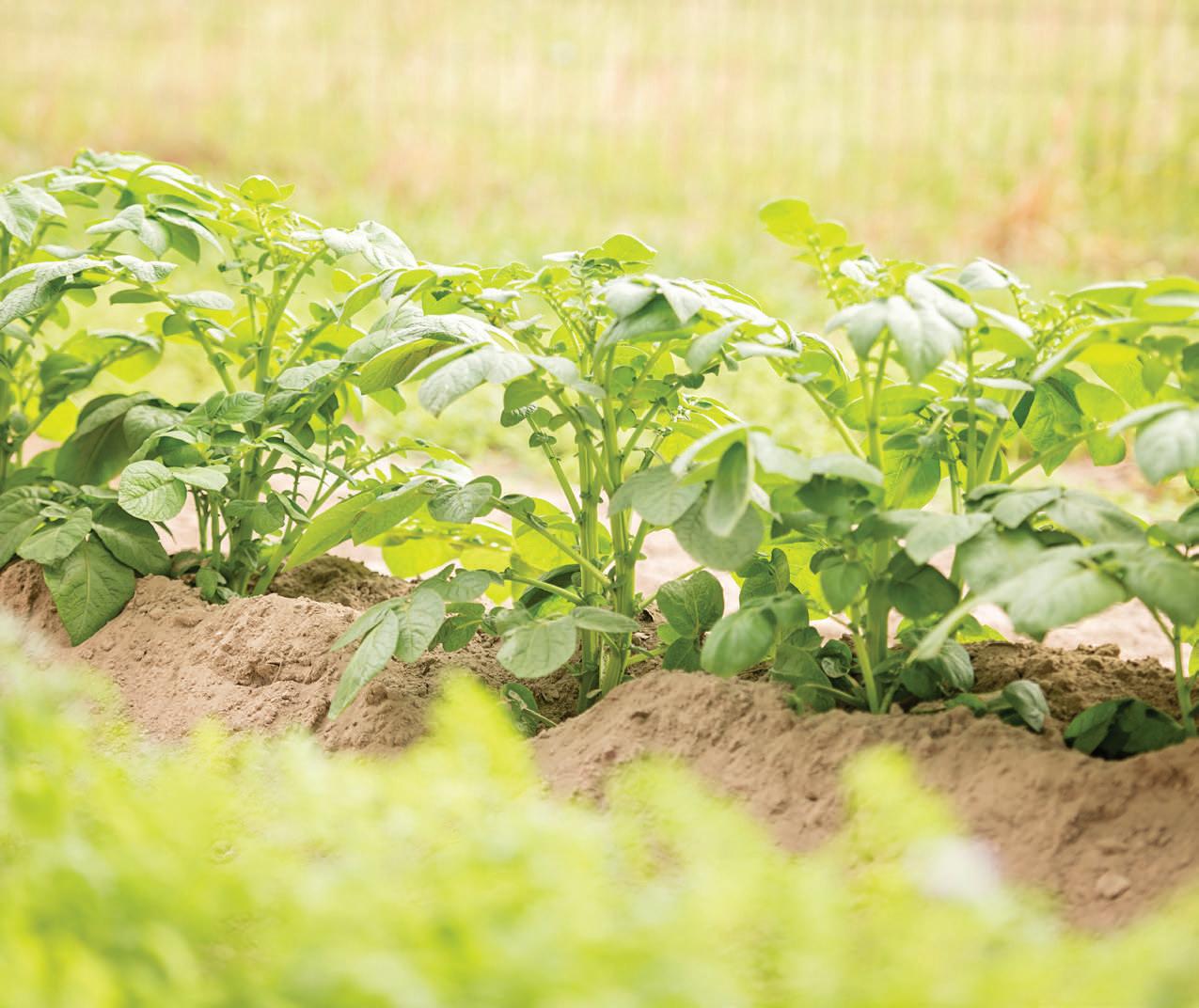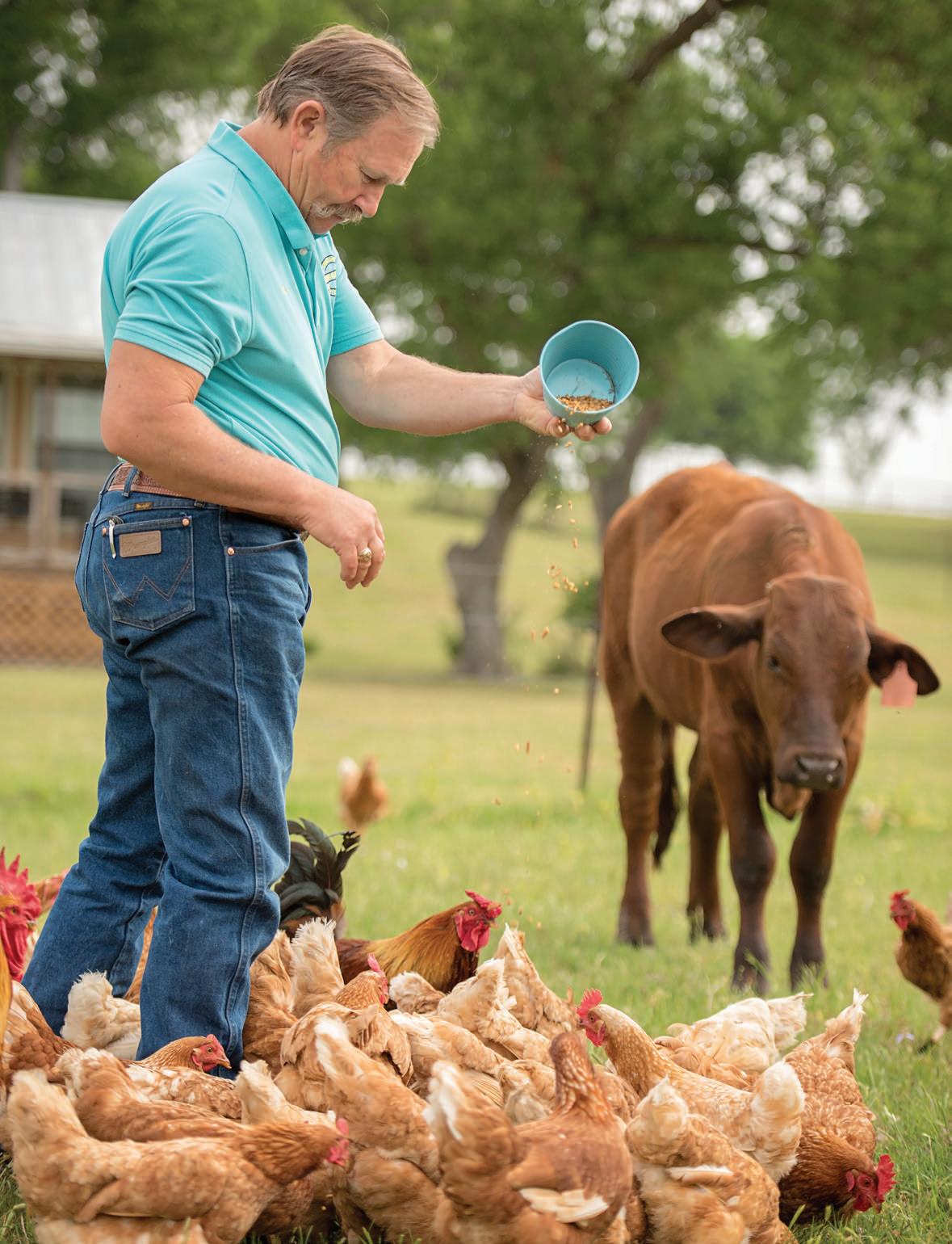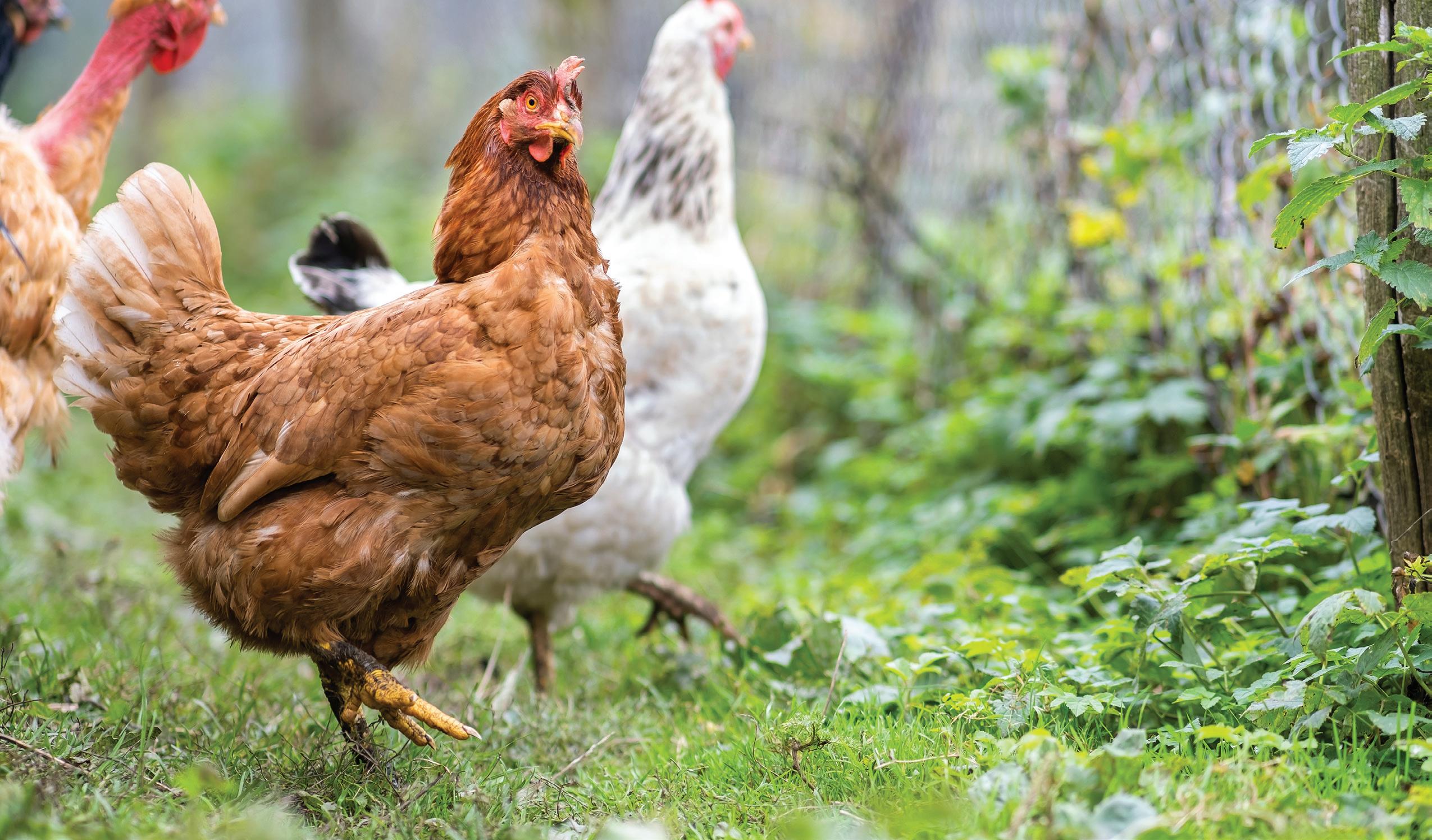
5 minute read
INSIDE THIS ISSUE
If you weren’t already thinking about it, interested in it or doing some of it…….the term self-sufficiency took on a whole new level of importance during the recent snow and ice storm. Many were without power for hours, some for days. A lot of folks had little or no water pressure, some went days without any running water at all.
There certainly has been a growing trend to become more self-sufficient. For many it’s wanting to have a way to take care of themselves and their families in times when things that are normally readily available become scarce or nonexistent. For others they also want the added knowledge of knowing what they are eating, where it is coming from and what it has in it (or doesn’t have in it).
Retail sales of grass-fed beef are doubling every year. The majority of grass-fed beef offered in supermarkets is imported from Australia, New Zealand, Uruguay, and Brazil, but there is a notable demand for domestically produced grass-fed beef as consumers’ appetite for local farm products climbs. The debate over country of origin labeling is fueling the local food fire even further, as current USDA rules allow imported meat products to be labeled “product of U.S.A.” if the meat undergoes further processing stateside.*
One of the areas leading producers of grass-fed beef is Granny’s Grass-fed Beef and Garden in Fayette County, owned by Mike and Diana Teinert.
“It started about 27 years ago, when we would go and sell our fresh veggies at a farmer’s market that was held at St. Paul’s Lutheran Church in La Grange. We had our two young boys with us and we would sell there each week,” says Diana.
They have been raising only grass-fed beef for about the past 12 years. Mike states, “When we switch from grain-fed to grass-fed meat, we are simply returning to the diet of our long-ago ancestors, it’s a diet that is most in harmony with our physiology. Grass-fed beef is naturally leaner than grain-fed beef and is loaded with natural minerals and vitamins, plus it’s a great source of CLA (conjugated linoleic acid) that has wonderful health benefits.” Mike also adds, “Beef in its natural grass-fed state, is a health food of the highest order.”

The Teinerts are seeing a tremendous growth in people wanting to learn more about their grass-fed beef. “We really have such great relationships with our customers” says Diana. “We have clients that come from as far away as Colorado to buy our beef.” They sell by the cut and also offer volume pricing on quarters, halves, whole and bulk pricing on ground meet and family packs.
They raise a Charolais/Beefmaster mix and average approx. 75 head of cattle at their 160 acre farm on any given day. Following a grass fed, no GMO grains, no growth hormones, no antibiotic regimen is their ranch management style. Mikes says, “it’s not normal for cattle to eat grain, especially chemically altered grains.” Their farm is a 5th generation working farm. Mike’s grandfather bought the place back when cotton and corn were farmed using only mules to plow the land. Mike and Diana now own the land and their son Nathan and his wife Crystal live there also. Grandkids William and Lillian (Lilly Marie), help out on the farm as well.






They make noodles with the grandkids and William, who is three years old, likes to help can pickles by stuffing the pickles into the jars. Lilly Marie, two, is also learning so many things. Both grandkids love the farm life and being around the cows and the chickens.
Their land is a full working homestead and their garden produces food for not only their family but enough to sell each week at a local Farmer’s Market in Bastrop and in La Grange at REDI Local Market (their cuts of beef are sold at these locations also). “We raise tons of food each year in our four-acre garden,” Mike stated. Mike is proud to tell about the pecan orchard, “we harvest pecans from an orchard that was planted on this land in 1938, and we do so without using any chemicals.”
Their love and passion of educating people on a grass-fed healthy and self-sufficient lifestyle has brought about their next endeavor: Homesteading Classes.
“We were working with people, one at a time, and found ourselves repeating everything over and over,” says Mike. “We decided to start conducting Homestead Classes, sharing skills that have been passed down from generations.”
They recently held their first class on property they own in Northrup and had twenty people in attendance. Mike states, “People are wanting to move to the country from the metropolitan areas and take on skills that have been lost, but it’s a scary thing for them. We are doing a follow up class on planting potatoes, fruit trees and gardening.”
At their first class Mike and Diana had everyone fill out a questionnaire on what they wanted in a homestead class. “The number one thing people were looking to learn about was plants, animals and how to grow things.” Mike said, “The second thing that was on every person’s list in attendance was water supply, electricity and how to survive when these things are not available.” (NOTE: This class and questionnaire was conducted prior to the snow/ice storm that hit the area several weeks ago.)
When asked what other classes they plan to have and how often the classes will be held, Mike says, “the plan is for every other week on the homestead classes, with seasonal classes on things such as picking berries and making jelly out of them.” He also added, “There is an interest in land: how to choose land, how to get water and power to it, people want information on mineral rights and agricultural exemptions.”
Mike has a degree in geology and Diana’s background is business. Her father was an entrepreneur and she learned a lot about business from him. She loves horses and grew up around them. She also raises horses on their family farm.
Mike and Diana can be reached at www.grannysgardentexas.com You can also follow them on their facebook page: Homestead 2020 or email Mike at rbranger2020@gmail.com
*This paragraph is from “A Beef Insider” article written by Lauren Manning for Successful Farming Magazine dated February 2021.








